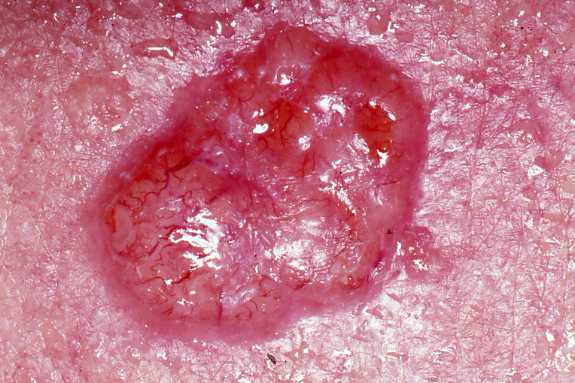Watch More! Unlock the full videos with a FREE trial
Included In This Lesson
Study Tools
Access More! View the full outline and transcript with a FREE trial
Transcript
Okay, we're going to go ahead and get started on a care plan. So we're going to be going through some subjective data and we're going to go through some objective data. So what are we going to see with these patients? The patient may be complaining of some itchiness or some painful bumps. You might also see shiny pink or red pearly bumps. You may also see white, yellow, or waxy spots with an irregular border. Other things to consider that you might see are some skin growth with raised borders that are crusty in the center, or an open sore that doesn't go away. Assess a suspicious mole using the mnemonic A, B, C, D, E.
So interventions. We want to make sure we're doing an assessment from head to toe. You want to make sure that we're noting areas of suspected skin cancers and their size and characteristics. We want to make sure we're getting baseline data to determine if the growth continues to spread or if the treatment is being effective. Another invention we're going to be doing is to prepare the patient by assisting with the biopsy of the skin lesions. This is performed by a punch or scalpel. So we want to educate the patient on what is being done. We want to help prepare any supplies or equipment that's needed and able to perform this task. Another invention we want to do, we want to make sure we're managing pain as some patients may experience pain after a procedure. So we may want to give them some pain medication as needed. We're going to monitor for signs of infection following a biopsy. So, odor and color after a biopsy as it may be an open wound which would increase their risk of the infection.
Another intervention we want to do is apply or administer any sort of medications.The more basal cell carcinomas usually just require a topical medication, whereas advanced stage cancers, like melanomas, may require other medications. So we want to watch for any sort of adverse reactions with any medication that is given. We also want to make sure we're educating on prevention. This is a biggie: prevention of skin cancer. So what are we going to educate them on? We want them to avoid UV exposure, and want to make sure they're wearing sunscreen when they are in the sun. They can also wear some hats, long sleeve shirts, and make sure they're wearing sunglasses. They want to avoid tanning booths - huge, huge avoiding tanning beds and tanning booths. Another big thing is the pneumonic, A, B, C, D E. So patients can easily self monitor themselves from home and report any suspicious changes in their skin to their doctor or dermatologist.
Hey, we're going to go over the key points. So skin cancer is an uncontrolled growth of abnormal cells. The main causes are tanning beds and UV radiation. Subjective and objective data: may complain of itchiness, painful bumps on the skin, shiny pink pearly bumps, skin growth with raised borders, open source that do not go away, wart-like growth, white, yellow, or waxy area with irregular borders. We want to do a full head to toe assessment. You'll assist in skin biopsy of lesions and monitor for signs of infection post biopsy. We’ll want to make sure we're applying or administering medications. And the big thing is education - educating the patient on preventing skin cancer. All right. And that we have a completed care plan.
You guys did amazing. We love you guys. Go out, be yourselves today and, as always, happy nursing.
View the FULL Transcript
When you start a FREE trial you gain access to the full outline as well as:
- SIMCLEX (NCLEX Simulator)
- 6,500+ Practice NCLEX Questions
- 2,000+ HD Videos
- 300+ Nursing Cheatsheets
“Would suggest to all nursing students . . . Guaranteed to ease the stress!”
